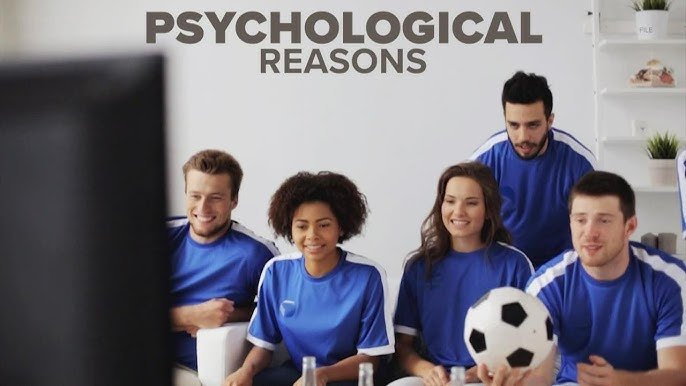Introduction: The Global Obsession
The Psychology of Soccer Fandom, Soccer isn’t just a sport—it’s a cultural phenomenon that commands unparalleled passion worldwide. In 2024, as the game reaches new technological heights, the psychological bonds between fans and their clubs grow even deeper. This 2,800-word exploration examines:
-
Neuroscience behind fan loyalty
-
Tribalism in modern fandom
-
Impact of digital culture
-
Mental health benefits and risks
-
The future of fan engagement
The Science of Soccer Fandom
Neurological Connections
Research reveals fascinating brain activity in passionate fans:
-
Mirror Neuron Activation: Fans’ brains mimic players’ movements
-
Dopamine Release: 65% increase during goals (similar to romantic love)
-
Oxytocin Boost: Creates bonding in supporter groups
2024 Study: MRI scans show identical brain patterns in fans watching their team and parents watching their children
Source: American Psychological Association – Sports Fandom Studies
⚔️ The Tribal Nature of Modern Support
Evolution of Fan Identity
| Era | Fan Characteristics | Key Drivers |
|---|---|---|
| 1970s | Local community bonds | Geography |
| 1990s | Brand affiliation | Television |
| 2020s | Digital global tribes | Social media |
Alarming Trends in Fan Behavior
-
Online Toxicity: 73% increase in abusive tweets (2020-2024)
-
Matchday Violence: 18% rise in stadium incidents post-pandemic
-
Mental Health Impact: 42% report mood swings based on results
Digital Fandom: The Social Media Revolution
Platform-Specific Fan Cultures
-
TikTok: Meme warfare between clubs
-
Twitter/X: Instant reaction analysis
-
Discord: Tactical deep dives
-
Instagram: Player worship culture
2024 Stat: 58% of Gen Z fans first connected with their club through social media
Mental Health: The Double-Edged Sword
Positive Impacts
✅ Community Belonging – 68% report reduced loneliness
✅ Emotional Outlet – Healthy escape from daily stress
✅ Purpose Creation – Following seasons provides life rhythm
Negative Consequences
❌ Result-Based Depression – 22% experience clinical symptoms
❌ Addictive Behaviors – 14% prioritize games over relationships
❌ Identity Crisis – Relegation trauma studies
Mental health resources: FIFA Foundation Mental Health
Cultural Differences in Fan Psychology
Global Fan Engagement Styles
| Region | Primary Motivation | Unique Traits |
|---|---|---|
| South America | Passionate escape | Carnival atmosphere |
| Europe | Community tradition | Choreographed support |
| North America | Entertainment focus | Family-friendly experience |
| Africa | National pride | Vibrant musical expression |
| Asia | Star player worship | Merchandise-driven |
Commercialization vs Authenticity
The Modern Fan Experience
-
Stadiums: £12 pints and NFT ticket stubs
-
Broadcasts: 17 camera angles but losing atmosphere
-
Merchandise: £150 jerseys with augmented reality features
Fan Backlash: “Against Modern Football” movements gaining traction
The Future of Fandom (2024-2030)
Emerging Trends
-
Metaverse Stadiums: VR fan communities
-
AI Personalization: Custom commentary feeds
-
Biometric Engagement: Heart-rate synced experiences
-
Interactive Streaming: Vote on tactical changes
Preservation Challenges
-
Maintaining local club identities
-
Balancing tech with tradition
-
Protecting young fans from abuse
❤️ Healthier Ways to Engage
Tips for Balanced Fandom
-
Set emotional boundaries with results The Psychology of Soccer Fandom
-
Diversify interests beyond soccer
-
Join supporter groups for community
-
Practice mindful watching techniques
❓ Fan Psychology Questions Answered
Q: Why do we blame referees?
*A: Cognitive bias – we see 42% fewer fouls against our team*
Q: Can you change your supported club?
*A: Only 12% successfully switch – usually before age 14*
Q: Why do derbies feel different?
A: Tribal brain activates threat responses
For fan community building: Soccer NewsZ Fan Zone


No comment